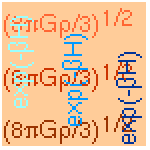
Physics 395 - Computational Physics is
a third year course for physics students at Simon Fraser University.
The course assumes that the student has experience in a scientific
programming language such as C/C++.
Description Computer based approaches to the solution of complex physical problems.
A partial list of topics includes: Monte-Carlo and molecular dynamics techniques
applied to thermal properties of materials; dynamical behaviour of conserved and
dissipative systems, including chaotic motion; methods for ground state determination
and optimization, including Newton-Raphson, simulated annealing, neural nets, and
genetic algorithms; the analysis of numerical data; and the use of relevant numerical libraries.
Format: Two lecture/lab sessions per week, 1:30 to 3:30 on Tuesdays and
Thursdays, given in the Computational Physics Lab, P8444A.
Assignments: Weekly assignments require small computer codes to be
written by the student. The physical systems used in each assignment are selected
such that students can build upon their codes from one week to the next.
In the first week, the assignments are drawn from Appendix A (the
obligatory "Hello World" code) and Appendix B (a simple graphics code).